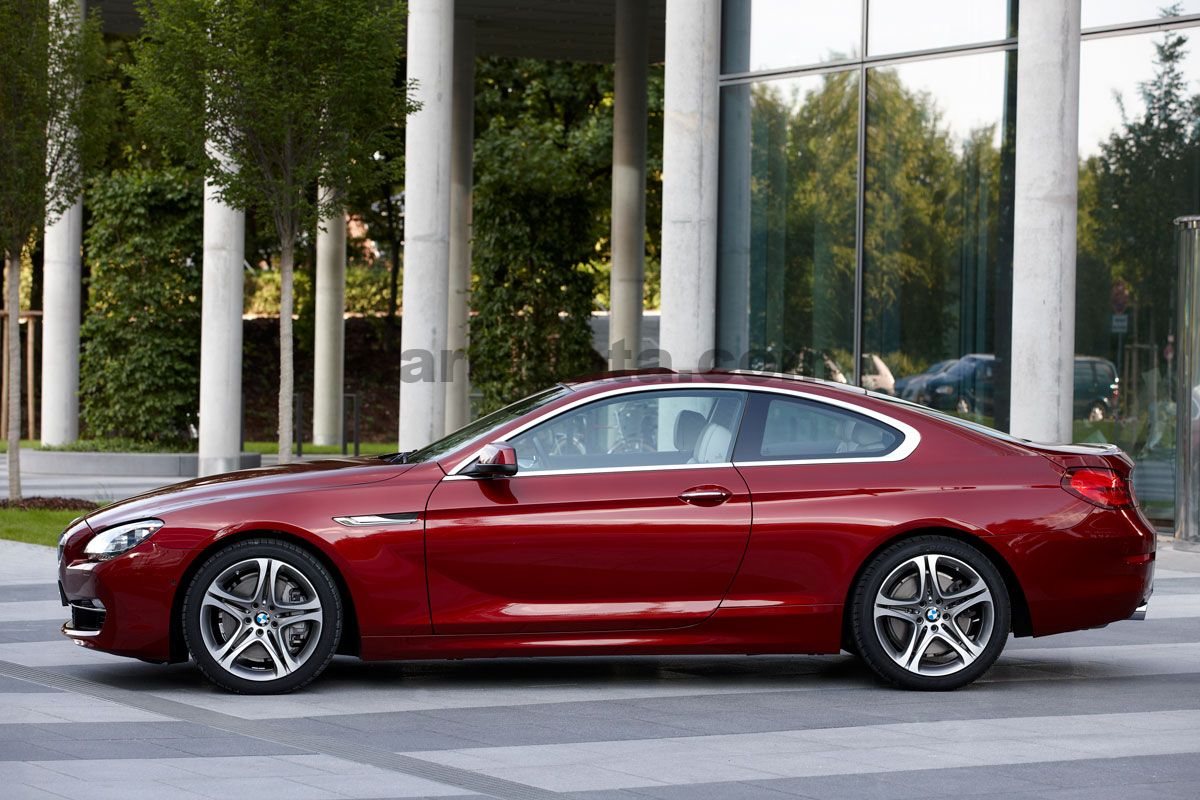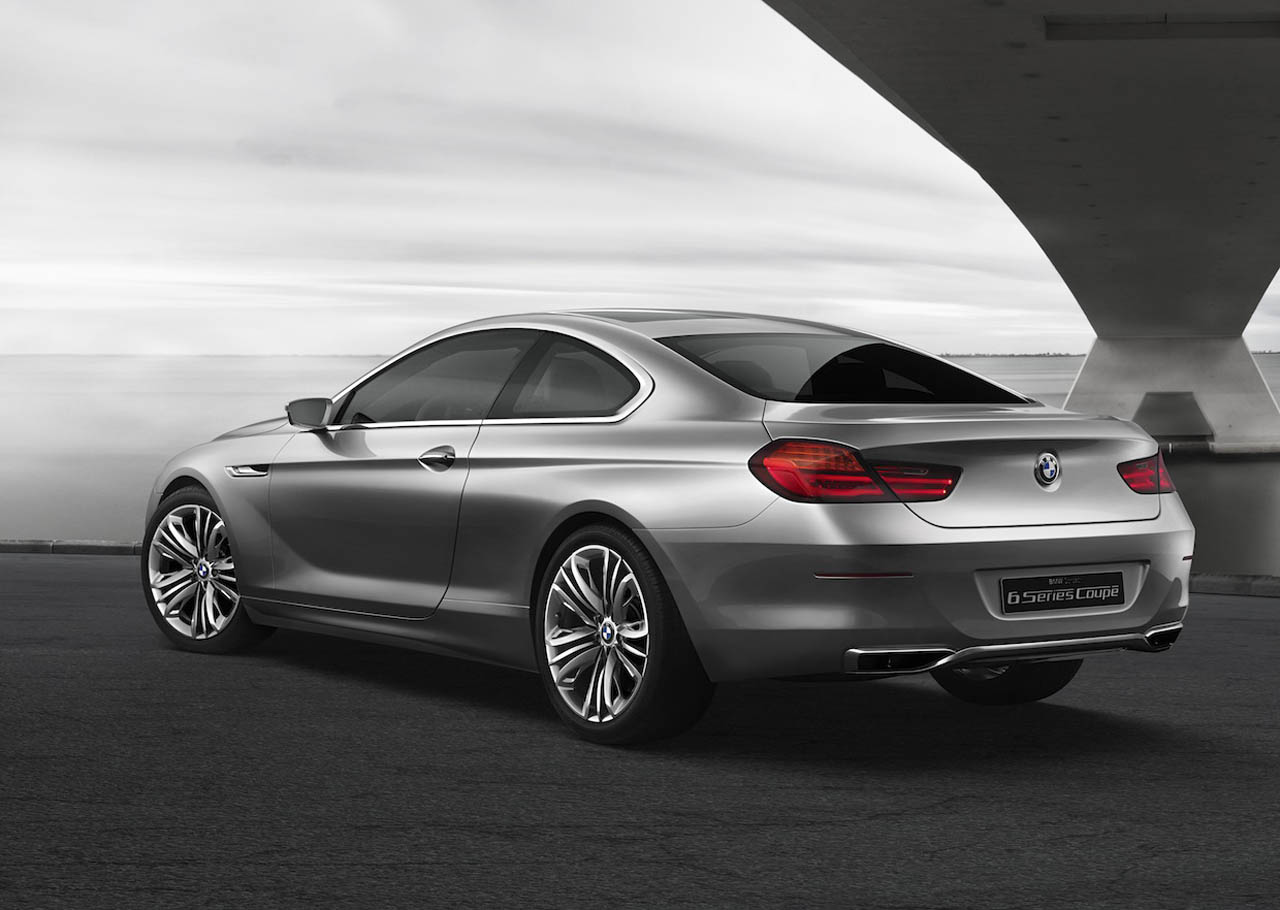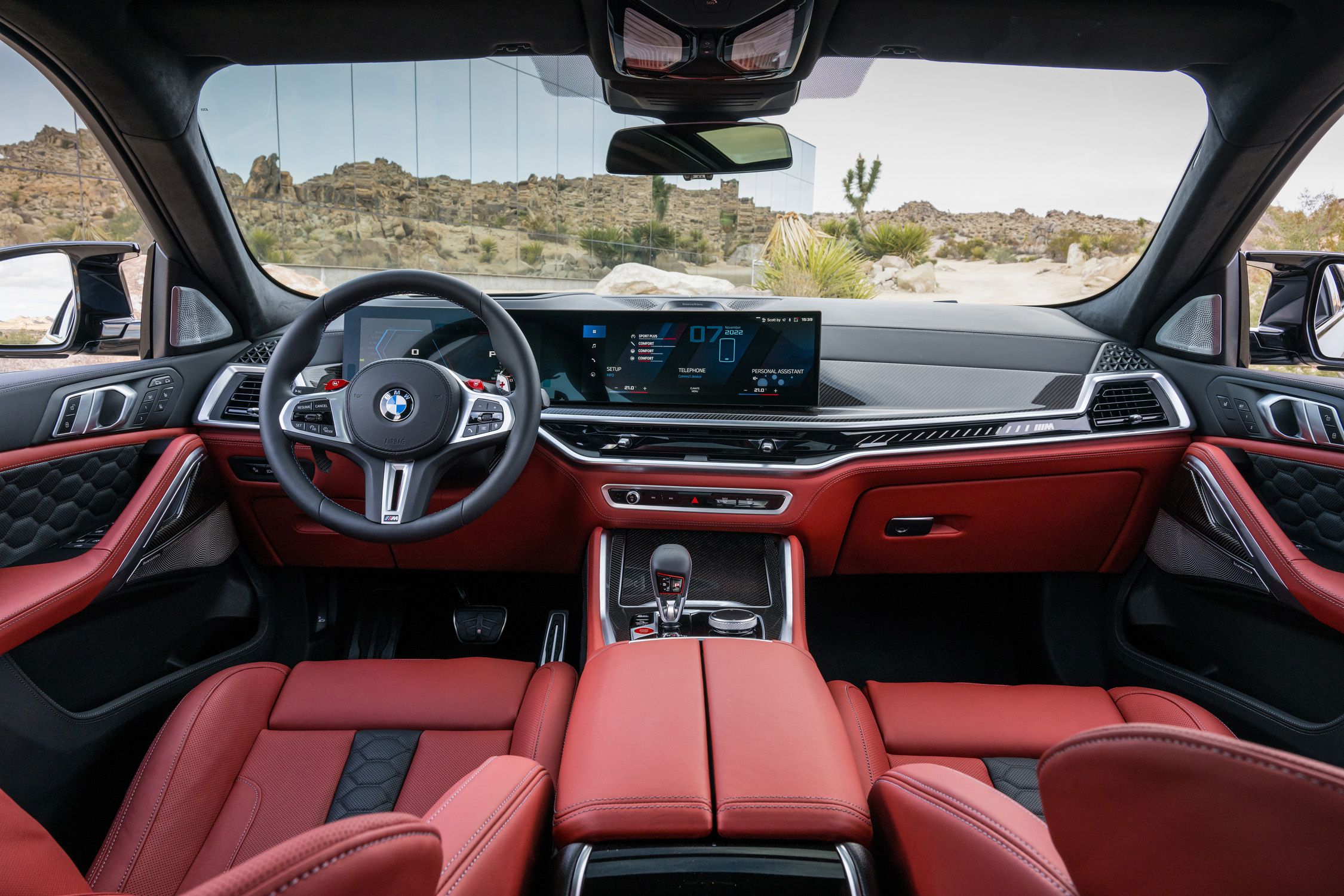Overview of the 6 Series BMW
The BMW 6 Series, a symbol of athletic luxury and performance, has captivated automotive enthusiasts for decades. Its evolution reflects BMW’s commitment to pushing design and engineering boundaries while catering to a discerning clientele. From its initial introduction as a grand tourer to its current iteration, the 6 Series has consistently redefined the luxury coupe and convertible segment.
The 6 Series, initially a coupe, quickly expanded its offerings to encompass various body styles, including convertibles, and eventually, Gran Coupes. This versatility, coupled with its powerful engines and refined handling, has contributed to its enduring popularity. The car’s aesthetic and performance characteristics have resonated with a global audience, cementing its place as a significant player in the luxury automotive market.
Historical Evolution and Generations
The 6 Series’ lineage stretches back to the 1970s with the introduction of the 6 Series, evolving over several generations to incorporate modern design and technology. The initial models aimed to balance sporty performance with luxury appointments, a theme that has been consistent throughout its history. Each generation has incorporated innovative design elements and upgraded technology.
Body Styles and Design Elements
The 6 Series has consistently featured a distinctive silhouette, emphasizing sleek lines and a low-slung profile. The coupe’s two-door configuration and the convertible’s retractable top epitomize the brand’s focus on luxury and driving enjoyment. Key design elements, such as the kidney grille, characteristic headlights, and sculpted body lines, have been refined over the years to maintain a contemporary aesthetic.
Engine Options and Performance Specifications
Powering the 6 Series are a range of potent engines, designed to deliver exhilarating performance. From turbocharged inline-six engines to powerful V8s, the available options have consistently offered a balance of power and efficiency. The performance specifications vary considerably across the different generations, reflecting advancements in engine technology and fuel efficiency standards. Furthermore, the specific engine options often align with the specific body style, influencing the overall driving experience.
Comparison of Key Features Across Generations
The table below highlights the variations in engine size, horsepower, and fuel efficiency across different generations of the 6 Series. This comparison provides insights into the evolution of performance and fuel efficiency throughout the model’s lifespan.
| Generation | Engine | Horsepower | Fuel Efficiency (Estimated MPG) |
|---|---|---|---|
| E63 (2003-2009) | 4.8L V8 | 399 hp | 16-18 City / 20-25 Highway |
| F12 (2010-2017) | 3.0L Twin-Turbocharged I6 | 300-450 hp | 18-24 City / 25-32 Highway |
| G32 (2017-Present) | 3.0L Twin-Turbocharged I6 / 4.4L V8 | 320-500 hp | 19-26 City / 27-35 Highway |
Note: Fuel efficiency figures are estimated and may vary based on driving conditions and individual vehicle setup.
Performance and Driving Dynamics

The BMW 6 Series boasts a dynamic driving experience, balancing sportiness with comfort. Its handling characteristics are tuned for a refined blend of agility and stability, making it suitable for both spirited drives on winding roads and relaxed journeys on highways. Different engine options cater to varying performance preferences, while advanced suspension and steering technologies contribute to a premium driving experience.
Engine Performance Comparison
The 6 Series lineup offers a range of powertrain options, each with distinct performance characteristics. The inline-six and V8 engines are known for their smooth power delivery and responsive throttle response. However, their fuel efficiency may be lower compared to some of the turbocharged inline-four options. Turbocharged engines provide a balance between power and fuel economy, delivering impressive acceleration while maintaining a relatively low fuel consumption rate.
Suspension and Steering Systems
The 6 Series incorporates advanced suspension and steering technologies to enhance its handling and responsiveness. Adaptive dampers adjust to road conditions, offering a tailored driving experience, switching between comfort and sport modes. Electric power steering systems provide precise and responsive steering feel, contributing to the vehicle’s agility and control. The precise steering feel allows for greater confidence in navigating turns and maintaining control.
Driving Modes
The 6 Series offers various driving modes, impacting the vehicle’s throttle response, steering feel, and suspension characteristics. Sport mode sharpens throttle response, enhances steering responsiveness, and stiffens suspension for a more athletic driving experience. Comfort mode prioritizes a smooth and relaxed ride. Eco mode optimizes fuel efficiency, reducing throttle response and adjusting the suspension to a more comfortable setting. The ability to customize the driving experience based on personal preference is a significant advantage.
Performance Metrics
The performance characteristics vary depending on the specific engine configuration and trim level. A table showcasing approximate performance metrics for different 6 Series models is provided below. Note that these are approximate values and actual figures may vary depending on specific conditions.
| Model | 0-60 mph | Top Speed |
|---|---|---|
| 640i | 5.5 seconds | 155 mph |
| 650i | 4.7 seconds | 168 mph |
| 650i xDrive | 4.6 seconds | 168 mph |
| M6 | 3.2 seconds | 190 mph |
Interior and Technology

The BMW 6 Series boasts a sophisticated interior designed to impress, blending luxury with cutting-edge technology. The materials used, from premium leather to high-quality plastics, contribute to a refined and comfortable driving experience. This focus on both aesthetics and practicality is a hallmark of the 6 Series’ appeal.
Interior Design and Materials
The interior design of the 6 Series prioritizes a driver-centric layout. Ergonomic controls and intuitive placement of features enhance ease of use. High-quality materials like fine-grain wood accents and supple leather are commonly employed, reflecting the 6 Series’ commitment to luxury. The cabin’s overall design is sleek and modern, maintaining a connection to the exterior’s athletic silhouette. Soft-touch surfaces and carefully chosen finishes contribute to a premium atmosphere.
Infotainment System
The infotainment system in the 6 Series is a key element of its technology suite. A large touchscreen display, typically ranging in size from 10.25 inches to 14.9 inches, provides a user-friendly interface for controlling various functions. Integration with smartphone platforms like Apple CarPlay and Android Auto allows seamless connectivity, enabling users to access their preferred apps and services. The system’s responsiveness and intuitive navigation contribute to an enjoyable user experience.
Comfort and Convenience Features
The 6 Series prioritizes comfort and convenience for both driver and passengers. Features such as heated and cooled seats, memory settings, and adjustable lumbar support cater to individual preferences. Advanced climate control systems maintain optimal temperatures throughout the cabin, enhancing the overall driving experience. Additionally, the inclusion of ambient lighting and premium sound systems further elevates the sense of comfort and refinement.
Safety Features and Driver-Assistance Technologies
Advanced driver-assistance systems (ADAS) are integral to the 6 Series’ safety features. These technologies, such as lane departure warning, adaptive cruise control, and automatic emergency braking, enhance driver safety and reduce the risk of accidents. The integration of these features with the overall design ensures seamless operation and intuitive integration into the driving experience.
Standard and Optional Technology Features by Trim
| Trim | Infotainment | Safety Features |
|---|---|---|
| 630i | 10.25-inch touchscreen, Apple CarPlay, Android Auto | Lane departure warning, adaptive cruise control, automatic emergency braking |
| 640i | 12.3-inch touchscreen, gesture control, wireless charging | Blind spot monitoring, rear cross-traffic alert, parking assist |
| 650i | 14.9-inch touchscreen, personalized driver profiles, augmented reality navigation | Active lane keeping assist, surround-view camera system, night vision |
Note: Specific features and availability may vary depending on the model year and regional specifications.
Exterior Design and Styling

The BMW 6 Series, a grand touring coupe, has always been recognized for its distinctive exterior design. Its evolution showcases a commitment to elegance, performance, and a unique visual identity within the BMW lineup. This section delves into the key design elements, the styling evolution across generations, and a comparison with its competitors.
The 6 Series’ exterior design is a blend of athleticism and sophistication. Sculpted lines, aerodynamic contours, and precisely placed details contribute to a dynamic and captivating aesthetic. The overall impression is one of effortless power and refined luxury, perfectly embodying the 6 Series’ position as a high-performance grand tourer.
Key Design Elements Differentiating the 6 Series
The 6 Series distinguishes itself from other BMW models through a combination of unique design cues. These include a distinctive kidney grille, a long hood, a low-slung profile, and a sculpted rear end. The proportions of the car, particularly the elongated roofline, create a sense of effortless movement and power. The specific shape and size of these elements, along with the interplay of light and shadow, contribute to the 6 Series’ visual appeal.
Evolution of Exterior Design Across Generations
The 6 Series’ exterior design has evolved progressively across its various generations. Early models showcased a more rounded, classic aesthetic, while later generations leaned toward sharper lines and more aggressive contours, reflecting advancements in design technology and the pursuit of enhanced aerodynamics. This evolution maintains a recognizable BMW identity while adapting to contemporary design trends. For example, the introduction of LED lighting technology and more pronounced creases have significantly enhanced the visual appeal and modern feel of the 6 Series in recent iterations.
Comparison with Competitors
The 6 Series’ exterior design positions it in a competitive segment with vehicles like the Mercedes-Benz CLS-Class and the Audi A7 Sportback. While these competitors offer similar luxury and performance attributes, the 6 Series often differentiates itself through its more athletic and sculpted profile. Specific design elements, such as the unique front fascia and rear diffuser, contribute to a distinct character that sets it apart from its rivals. The 6 Series aims to appeal to drivers who desire a blend of sporty aesthetics and luxurious comfort.
Exterior Dimensions
| Model | Length (mm) | Width (mm) | Height (mm) |
|---|---|---|---|
| 2023 6 Series Gran Coupe | 4,887 | 1,868 | 1,410 |
| 2021 6 Series Gran Coupe | 4,887 | 1,868 | 1,410 |
| 2018 6 Series Gran Coupe | 4,876 | 1,868 | 1,408 |
Note: Dimensions may vary slightly depending on specific trim levels and options. The table above provides a general overview of the exterior dimensions for the 6 Series Gran Coupe models over the past few years.
Market Positioning and Competitors
The BMW 6 Series occupies a unique niche in the luxury automotive market, targeting affluent consumers seeking a blend of performance, style, and exclusivity. Its position is strategically positioned between more affordable luxury coupes and the pinnacle of ultra-luxury performance vehicles. This positioning demands a clear understanding of the competition and the 6 Series’ unique selling propositions.
The 6 Series, whether coupe or convertible, appeals to a discerning clientele who value sophisticated aesthetics, exhilarating driving experiences, and premium interior appointments. This target audience typically encompasses individuals with high disposable incomes, seeking to express their success and taste through automotive choices. This target group values both the performance and luxury aspects of the vehicle.
Target Audience
The 6 Series’ target audience comprises affluent individuals, typically professionals and entrepreneurs, seeking a premium driving experience. This includes individuals who appreciate luxury and performance, seeking to express their success and taste through their automotive choices. They often have a strong interest in design, technology, and high-performance driving dynamics.
Competitors and Comparison
The BMW 6 Series faces formidable competition in the luxury coupe and convertible segments. Direct competitors include the Mercedes-Benz C-Class Coupe, the Audi A5 Sportback, the Porsche 911, and the Jaguar F-Type. Each competitor brings a unique set of strengths to the table, catering to different preferences within the luxury market.
Key Differentiators
The BMW 6 Series distinguishes itself from its competitors through a combination of factors. Its hallmark is a blend of powerful engines, sophisticated chassis technology, and distinctive styling. Furthermore, the 6 Series’ driving dynamics are often praised for their precision and responsiveness. The interior’s quality and technology are key differentiators, often featuring advanced infotainment systems and premium materials.
Sales Figures and Market Share
Unfortunately, precise sales figures and market share data for the BMW 6 Series are not readily available in the public domain. This information is usually considered proprietary by the manufacturers. However, BMW’s overall luxury vehicle sales figures consistently place it among the top players in the market. The 6 Series likely contributes a significant portion to this overall success.
Competitive Analysis
| Competitor | Strengths | Weaknesses |
|---|---|---|
| Mercedes-Benz C-Class Coupe | Well-established brand reputation, sophisticated interior design, refined ride quality. | Potentially less engaging driving dynamics compared to the 6 Series, might not offer the same level of performance-focused options. |
| Audi A5 Sportback | Excellent interior quality, spacious cabin, advanced technology features. | Potential compromise in handling and driving experience compared to the 6 Series, styling might not appeal to all tastes. |
| Porsche 911 | Legendary performance, iconic styling, unparalleled handling dynamics. | Higher price point, less practicality compared to the 6 Series, potentially a more niche appeal. |
| Jaguar F-Type | Bold and distinctive styling, powerful engines, engaging driving experience. | Potentially less refined interior compared to the 6 Series, might have limited practicality for daily use. |
Value Proposition
The BMW 6 Series, a luxury grand tourer, presents a compelling value proposition, particularly for discerning drivers seeking a blend of performance, style, and comfort. Its appeal lies in its ability to deliver a distinctive driving experience while offering a sophisticated interior and advanced technology, all within a well-established luxury brand. However, this comes at a price, and understanding the features that justify the premium is crucial.
Features Justifying the Price Point
The 6 Series’ price reflects its premium materials, cutting-edge technology, and performance capabilities. Key features that contribute to its value proposition include meticulously crafted interiors featuring high-quality leather and wood trim, state-of-the-art infotainment systems with intuitive interfaces, and powerful engines that deliver exhilarating performance. The attention to detail in the design and craftsmanship of the 6 Series resonates with the target audience’s desire for refined luxury.
Comparison to Competitors
The 6 Series competes directly with other luxury grand tourers, including the Mercedes-Benz S-Class Coupe and the Audi A8. While the 6 Series often holds a competitive edge in terms of handling and performance, its interior design and infotainment systems are important considerations for prospective buyers. Direct comparisons reveal that the 6 Series aims to appeal to a segment that prioritizes a dynamic driving experience and a luxurious interior, with the competitor models often emphasizing other facets like overall refinement or space.
Pros and Cons of Purchasing a 6 Series
The BMW 6 Series offers a captivating driving experience, exquisite design, and premium features. However, it’s crucial to acknowledge the potential drawbacks associated with its price point and specific features. This evaluation should aid prospective buyers in understanding the complete picture before making a decision.
Summary Table
| Benefit | Drawback |
|---|---|
| Exhilarating performance and handling, luxurious interior, cutting-edge technology | High price point, potential for maintenance costs, and limited cargo space compared to some competitors |